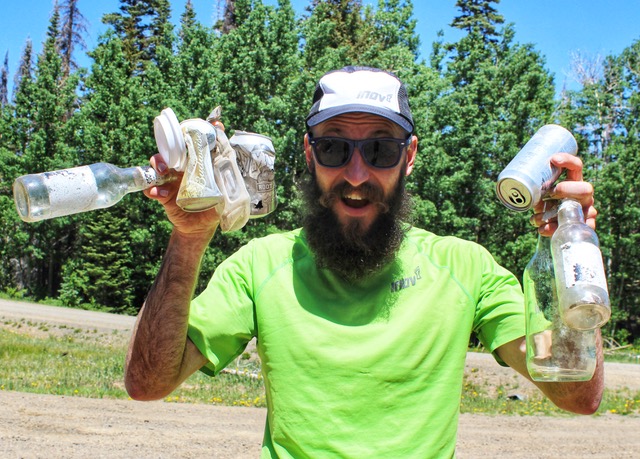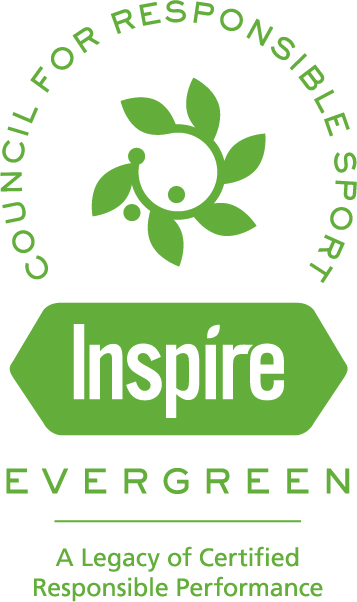FOR IMMEDIATE RELEASE
Contact: Zach Schneider
Marketing & Public Relations Director
zach@grandmasmarathon.com
(218) 727-0947
GRANDMA’S MARATHON EARNS PLACE AMONG
WORLD’S MOST SUSTAINABLE LARGE EVENTS
Earns Highest Certification Level from Council for Responsible Sport
(DULUTH, MINN.) --- Grandma’s Marathon has earned the Evergreen Certification from the Council for Responsible Sport, recognizing the organization’s ongoing commitment to environmental stewardship, community impact, and responsible event management.
The Evergreen Certification is the most rigorous standard offered by the Council for Responsible Sport, requiring a demonstrated commitment to sustainability and social equity across all aspects of race planning and execution.
“We believe Grandma’s Marathon can and should inspire meaningful change, not only in our individual participants but in our community as a whole,” Marketing & Public Relations Director Zach Schneider said. “Our staff and partners have worked tirelessly to put these values of sustainability into practice within our event, and we’re excited to further ingrain these values into our organization as we look to the future.”
The race first received the Gold Certification – one level below Evergreen – two years ago, and this year received 61 of a possible 66 credits to move up to the highest certification level possible.
Grandma’s Marathon becomes only the third United States marathon to receive the Evergreen Certification, joining the Chicago and Los Angeles Marathons.
“Grandma’s Marathon once again delivered a sustainability program that felt thoughtful and genuinely rooted in place,” Council for Responsible Sport certifier Laura Sivels said. “They approached each waste stream with intention, worked closely with community partners, and tied the experience back to what makes the Lake Superior region unique.”
London and Toronto Marathons have also earned the Evergreen Certification, as have other major events such as the US Olympic Track & Field Trials, the MLB All-Star Game, and the NCAA Men’s & Women’s Final Fours.
Among the environmental efforts during the 2025 race weekend that contributed to the Evergreen Certification of Grandma’s Marathon were:
• 436,000 cups composted & 50,000 cups kept out of landfills through use of reusable cups and partnership with Hiccup
• 148,000 plastic bottles avoided by supplying racecourse water via trucks and hydrants
• 234,000 pounds of CO2 avoided by bussing participants to the start line and 382,000 pounds of CO2 voluntarily offset by participants
• 6,900 pounds of recycled plastics, cardboard, and paper
• 784 pounds of recycled plastic film and Heat Sheets
• 7,511 pounds of clothing donated and resold or recycled through a partnership with True North Goodwill
• 50 pounds of nutritional packets recycled
• 60,600 pounds of compost generated
• 237 bikes checked at free bike valet
Among the social and community efforts during the 2025 race weekend that contributed to the Evergreen Certification of Grandma’s Marathon were:
• $39.4 million estimated economic impact to Duluth and surrounding region
• $600,000 raised for official charity partners
• 737 pounds of food donated to local food shelves and community organizations
• 166 free entries through Running to Common Ground program
• 67 organizations using items in free equipment lending library
After being originally certified for the first time two years ago, organizers set an internal goal for the past two years to increase their sustainability efforts to earn the Evergreen Certification in 2025.
“It shows how quickly and meaningfully Grandma’s Marathon has integrated responsible sport principles into its planning, operations, and community engagement,” Sivels said. “The growth since their first certification reflects both dedication and a clear long-term vision to reduce impacts and enhance benefits for participants, partners, and the region.”
“On one hand, it’s mission accomplished. We’re immensely proud of this certification,” Schneider added, “but on the other hand it also needs to propel us forward. There’s more to be done in this space, and we’re looking forward to the challenge of maintaining what we’re doing while finding even more ways to help protect and serve our community.”
For any questions or interview requests, please contact Marketing & Public Relations Director Zach Schneider via phone at (218) 343-9874 or via email at zach@grandmasmarathon.com.
ABOUT THE COUNCIL FOR RESPONSIBLE SPORT The Council for Responsible Sport envisions a world in which responsibly produced sports events are the standard. Its mission is to provide objective, independent verification of event organizers’ social and environmental efforts to positively impact their communities.
Since 2007, the Council has developed and continually updated the Event Certification standards, which have been adopted by more than 250 events globally.
###
ABOUT GRANDMA’S MARATHON Grandma’s Marathon began in 1977 when a group of local runners planned a scenic road race from Two Harbors to Duluth, Minnesota. After seeing just 150 registered participants that year, the marathon has now grown into the 10th largest in the United States. The race got its name from the Duluth-based group of famous Grandma’s Restaurants, the first major sponsor of the marathon. Having now added the Garry Bjorklund Half Marathon and William A. Irvin 5K, the race weekend now welcomes more than 20,000 participants to Duluth and the surrounding region each year. As the popularity of Grandma’s Marathon weekend has grown, our mission has stayed the same – to organize, promote, and deliver annual events and programs that cultivate running, educational, social, and charitable opportunities to our communities. Grandma’s Marathon-Duluth, Inc. is a 501(c)(3) tax-exempt nonprofit organization with a 10-person, full-time staff and a 17-member Board of Directors.





















